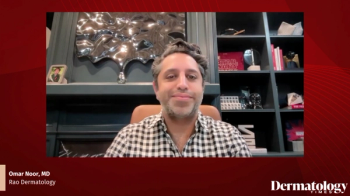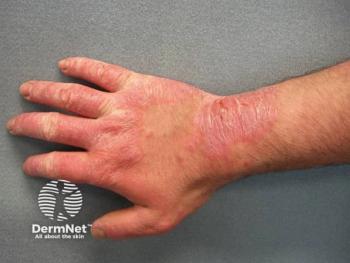
Lisa Swanson, MD, FAAD, Highlights Expanding Pediatric Treatment Options
Key Takeaways
- Pediatric dermatology has seen a dramatic increase in treatment options, including topicals, shots, and pills, enhancing patient care.
- Thoughtful communication and "gentle persuasion" are crucial when introducing new or long-term therapies to families.
Swanson discussed new and upcoming therapeutics, and how she approaches treatment options with caregivers.
At the 2025
“I remember coming to Society of Pediatric Dermatology conferences where we had almost nothing approved in the pediatric space,” Swanson told Dermatology Times. “Nowadays, it’s a whole different ball game. We’ve got topicals, we’ve got shots, we’ve got pills. We can adequately treat our patient population, and we’re looking forward to even more innovation down the road for even younger age groups.”
Swanson highlighted the importance of communicating thoughtfully with families, especially when introducing new or long-term therapies. Her strategy, which she refers to as “gentle persuasion,” involves presenting information and recommendations without pressuring families into making immediate decisions. “It can take time to realize that you are ready to take that on for your child and your family,” she explained. “I don’t pressure anybody, but I’m just always there to hopefully have a good relationship, work with and build trust.”
In clinical practice, the selection of acne treatments depends on a range of factors including the patient's age, disease severity, ability to adhere to medication, and tolerance for adverse effects. When prescribing oral antibiotics, for example, Swanson is cautious with tetracycline-class drugs in younger patients. While guidelines allow for use at age 9 and up, she tends to reserve these agents for those 12 and older, opting for alternatives like amoxicillin in younger children.
Among the tetracyclines, she notes personal and professional shifts over time. “I started out as a doxycycline person. Today I’m more of a minocycline person… If cost and coverage were equal, I would be a seracycline person.” She praises seracycline for its tolerability and gut-sparing properties but acknowledges that insurance hurdles often make doxycycline or minocycline more accessible.
Hormonal therapies, including oral contraceptives and spironolactone, also play a role in treating acne in adolescent girls. Each has its own considerations related to adherence, stigma, and side effects. Swanson discusses both options with patients and their families to arrive at a tailored decision.
Regarding isotretinoin, she emphasized both the practical and ethical considerations involved. The drug requires pill swallowing and strict safety monitoring, but she will not hesitate to use it in younger patients with severe, scarring acne. “If they have nodulocystic, scarring acne and they’re 10 years old, you better believe I’m going to treat them,” she said. “I don’t want that just sitting there and getting worse over years.”
Swanson’s insights reflect a broader shift in pediatric dermatology—toward earlier intervention, expanded therapeutic access, and a nuanced, family-centered approach to care.
Newsletter
Like what you’re reading? Subscribe to Dermatology Times for weekly updates on therapies, innovations, and real-world practice tips.



















